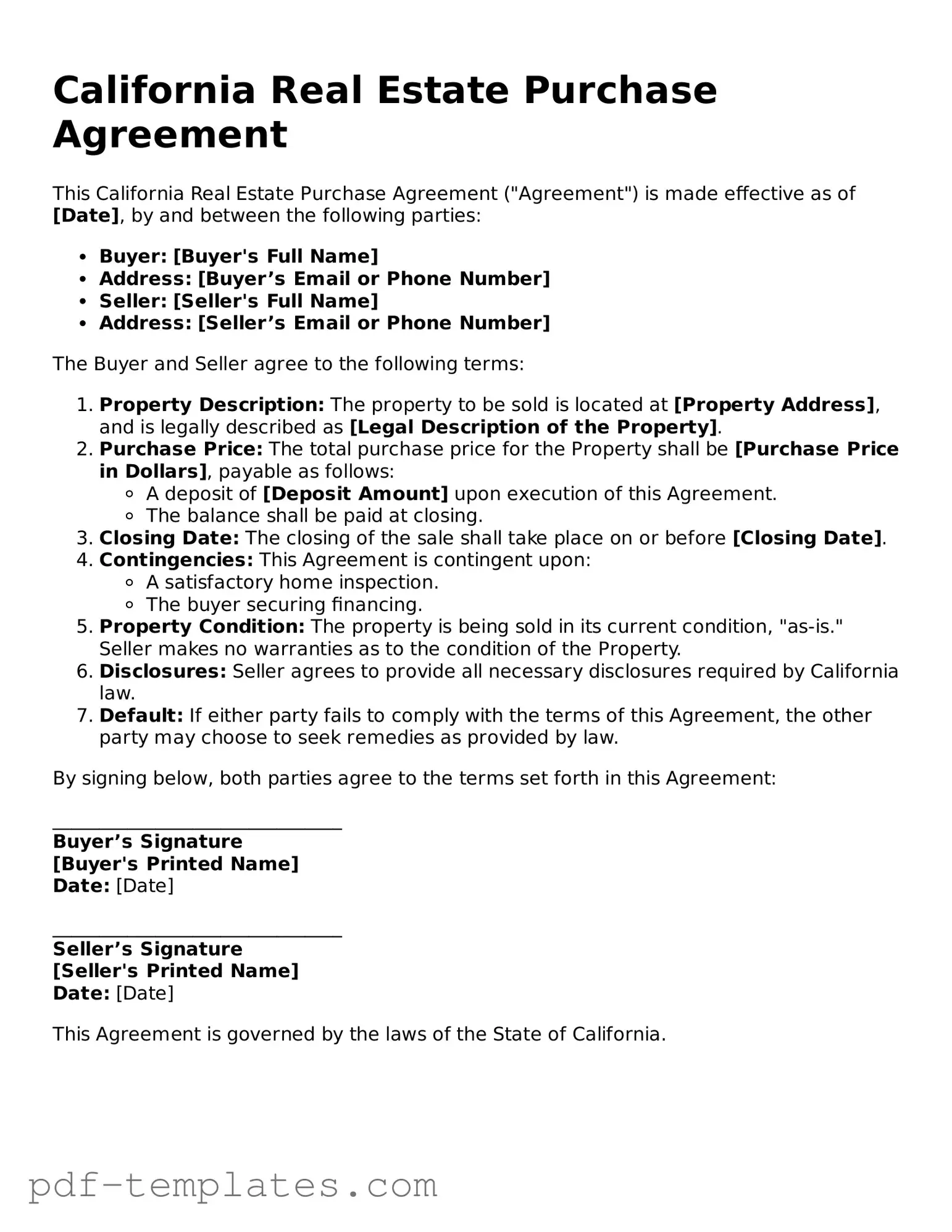The California Residential Purchase Agreement is similar to the Commercial Purchase Agreement. Both documents outline the terms of a real estate transaction, including purchase price, contingencies, and closing dates. While the Residential Purchase Agreement focuses on residential properties, the Commercial Purchase Agreement caters to commercial real estate transactions, detailing specific considerations relevant to business properties.
Another similar document is the Lease Agreement. While a Purchase Agreement facilitates the sale of property, a Lease Agreement establishes the terms under which a tenant may occupy a property. Both documents address critical elements such as payment terms, duration, and responsibilities of the parties involved. However, a Lease Agreement is temporary, while a Purchase Agreement typically leads to ownership transfer.
As businesses navigate the complexities of real estate transactions, it is crucial to be aware of various forms that impact the purchasing process, including the All California Forms, which can provide essential documentation like the California Resale Certificate, ensuring compliance and clarity in buying and selling properties while adhering to tax regulations.
The Option to Purchase Agreement shares similarities with the Purchase Agreement. This document grants a potential buyer the right to purchase a property at a predetermined price within a specific timeframe. Like the Purchase Agreement, it outlines terms and conditions but emphasizes the buyer's option rather than an obligation to buy.
The Seller's Disclosure Statement is also related to the Purchase Agreement. This document provides essential information about the property's condition and any known issues. While the Purchase Agreement includes terms of sale, the Seller's Disclosure ensures transparency and helps buyers make informed decisions based on the property's status.
Another related document is the Escrow Agreement. This agreement outlines the process of holding funds and documents by a neutral third party until all conditions of the Purchase Agreement are met. Both documents work together to ensure a smooth transaction, with the Escrow Agreement providing security and clarity during the closing process.
The Counteroffer is a crucial document in real estate negotiations. When a buyer or seller disagrees with the terms of the initial Purchase Agreement, a counteroffer is made to propose new terms. This document is similar in that it continues the negotiation process, ultimately leading to a mutually agreed-upon Purchase Agreement.
Lastly, the Real Estate Agency Agreement is akin to the Purchase Agreement in that it establishes a formal relationship between a buyer or seller and their real estate agent. This document outlines the agent's responsibilities and the commission structure. While it does not directly involve the sale of property, it plays a critical role in facilitating the Purchase Agreement by ensuring that both parties have professional representation throughout the transaction.
